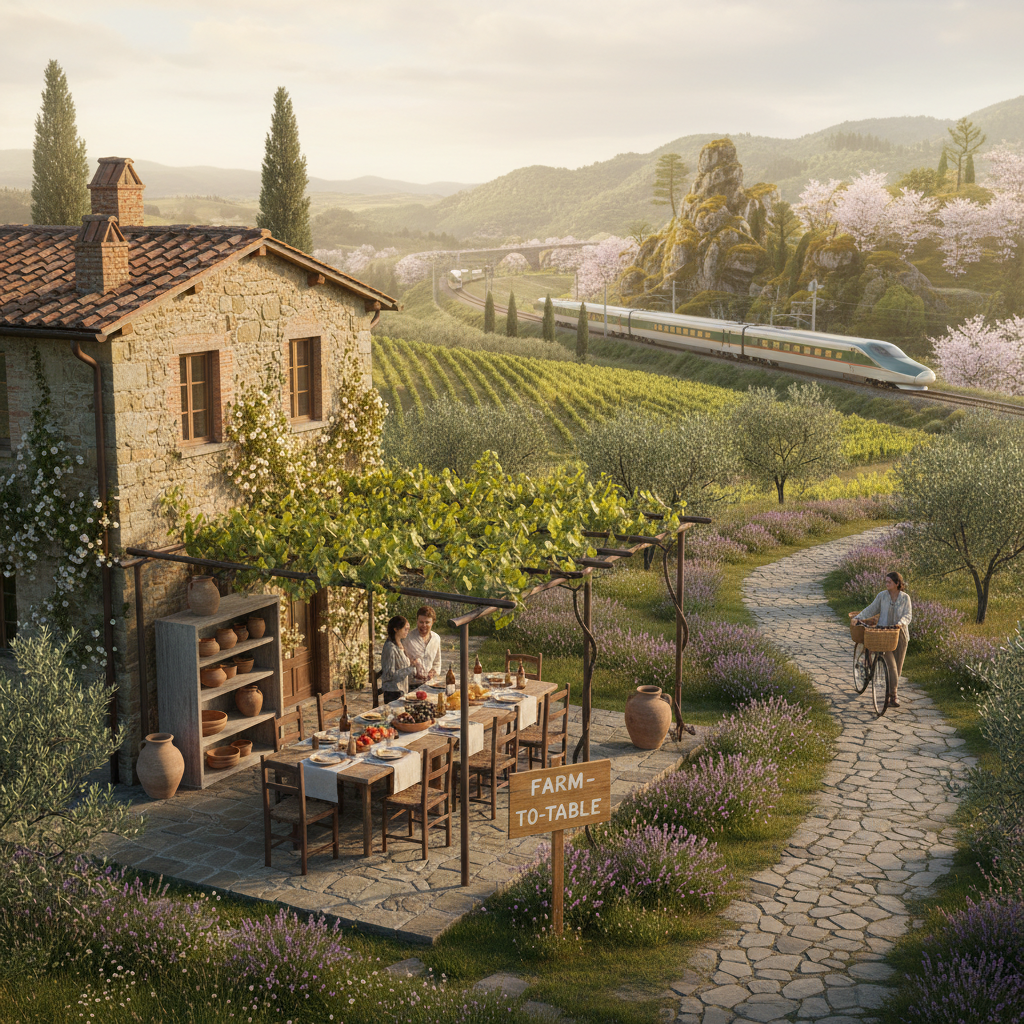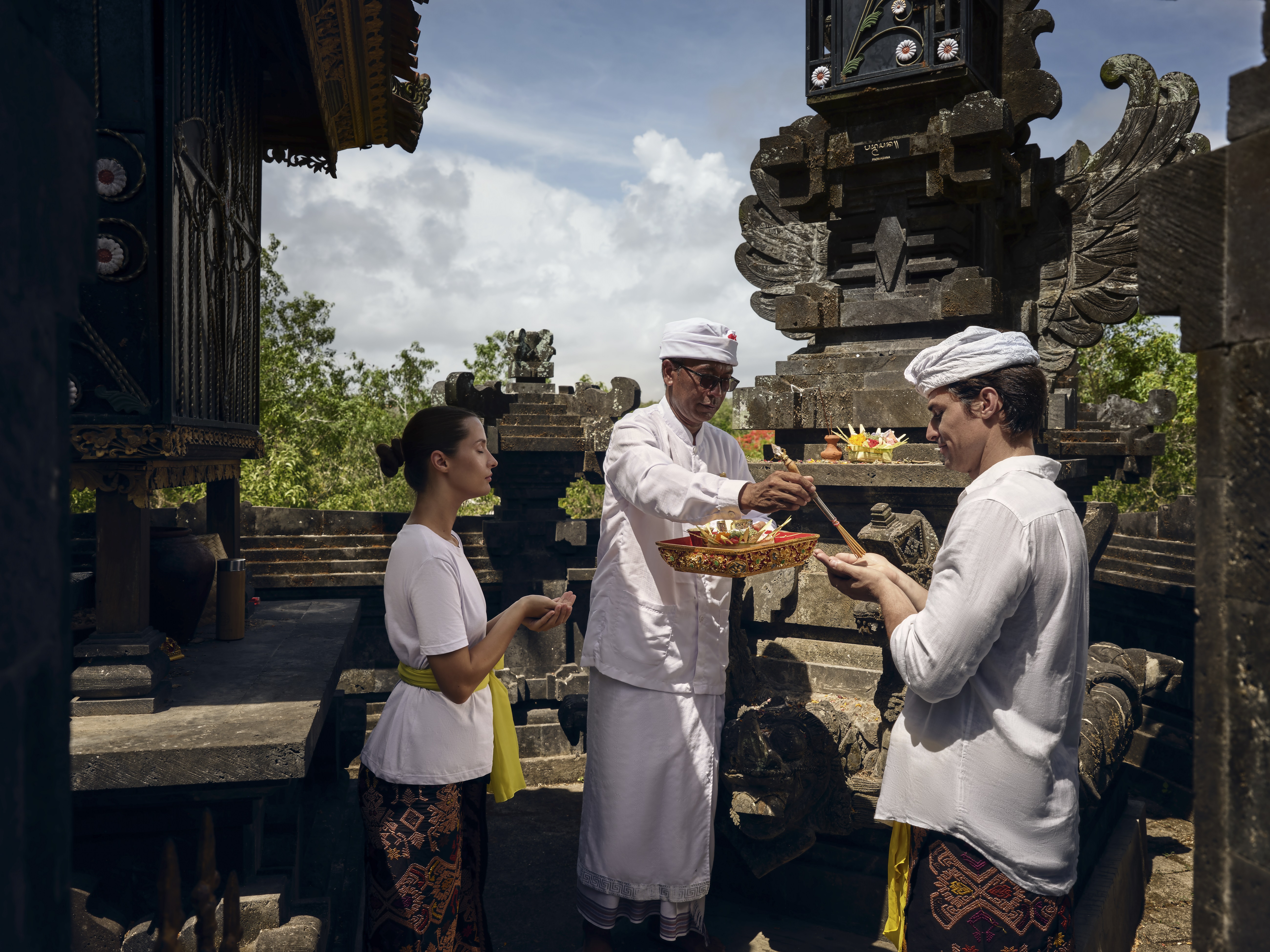
Slow Luxury Travel: Embracing Immersion, Sustainability, and Well-being
Slow luxury travel marks a shift from traditional fast-paced, material-focused tourism to a more meaningful approach centered on cultural immersion, sustainability, and well-being.
It encourages longer stays, authentic local experiences, and mindful exploration, promoting environmental responsibility and mental clarity. Key principles include engaging deeply with local culture, minimizing environmental impact through extended stays and reduced air travel, and prioritizing quality, curated experiences over quantity.
Destinations like Italy and Japan exemplify this movement with rich traditions and sustainable practices. Ultimately, slow luxury travel redefines true luxury as presence, connection, and thoughtful engagement, offering travelers richer, more fulfilling journeys that benefit both people and the planet.
Summary
Embracing Slow Luxury Travel: A Shift Toward Immersion, Sustainability, and Well-being
Luxury travel is evolving beyond the traditional focus on conspicuous consumption and fast-paced itineraries. The emerging approach, known as slow luxury travel, emphasizes meaningful cultural immersion, sustainability, and personal well-being over material excess and rapid sightseeing. This travel philosophy encourages longer stays, authentic connections with local communities, and mindful engagement with cultural and natural environments. As such, slow luxury travel supports both environmental responsibility and mental clarity, redefining what it means to experience the world’s most treasured destinations.
Key Elements of Slow Luxury Travel
Slow luxury travel relies on several interrelated principles that redefine luxury for today’s discerning travelers:
- Immersion and Cultural Authenticity: Travelers prioritize living like locals by engaging deeply with local culture. Experiences such as dining at authentic restaurants, participating in traditional crafts, and forming genuine connections with residents enrich the journey beyond typical tourist activities.
- Sustainability and Environmental Responsibility: The movement addresses the growing expectation for luxury travel to positively impact local economies while minimizing environmental harm. By favoring extended stays and less frequent air travel, slow luxury helps reduce carbon footprints and alleviates the strain on overvisited sites.
- Well-being and Mindfulness: Slowing down travel allows individuals to cultivate mindfulness and emotional enrichment. The journey itself—whether via scenic train routes, walking, or cycling—becomes an opportunity for reflection and mental clarity rather than mere transit.
- Quality Over Quantity: Luxury is increasingly defined by curated, high-quality experiences rather than accumulation of material symbols or extensive sightseeing. Multi-night stays, private cultural access, and disconnection from everyday distractions are highly valued.
Interconnection Between Slow Travel, Sustainability, and Traveler Well-being
The slow luxury travel ethos naturally promotes sustainability through reduced reliance on high-impact forms of transportation and encourages responsible tourism practices. Extended engagement with local communities ensures that economic benefits are distributed equitably, supporting local businesses and artisans. Numerous studies and anecdotal reports highlight the mental and emotional benefits of slow travel, affirming that unhurried, immersive experiences foster satisfaction, deeper appreciation of surroundings, and lasting memories. This mindful pace also enhances the traveler's well-being by promoting presence and connection—elements that are increasingly regarded as essential components of luxury.
Exemplary Destinations: Italy and Japan
Certain destinations have emerged as leaders in the slow luxury movement due to their entrenched traditions of cultural authenticity and environmental stewardship.
- Italy: Known for the slow food movement, Italy offers farm-to-table dining experiences, vineyard stays, and leisurely exploration of historic cities. There is a strong emphasis on preserving culinary traditions and craftsmanship, inviting travelers to engage with local heritage at a relaxed pace.
- Japan: Japan’s rich cultural practices such as tea ceremonies, forest bathing, and ryokan stays provide opportunities for mindfulness and cultural immersion. Its extensive network of scenic train routes, including the high-speed Shinkansen and regional lines, facilitates slow travel through diverse natural and cultural landscapes while supporting sustainable tourism infrastructure.
These destinations demonstrate how integrating local culture, nature, and sustainability can elevate travel into an enriching, responsible luxury experience.
The Future Outlook for Luxury Travel
The slow luxury travel movement represents a deliberate response to the demand for deeper, more meaningful travel in an increasingly fast-paced world. It signals a paradigm shift where travelers seek presence rather than possessions, connection rather than consumption, and quality rather than quantity. As this trend grows, more destinations and travel providers are expected to emphasize cultural authenticity, environmental responsibility, and traveler well-being as central pillars of luxury. This evolution underscores a broader commitment to fostering positive social and environmental impacts through thoughtful and deliberate travel experiences.
Conclusion
Slow luxury travel redefines luxury by placing immersion, sustainability, and mindfulness at the heart of the journey. By prioritizing authentic local culture, environmental stewardship, and personal well-being, this approach offers travelers a richer, more fulfilling way to explore the world. As tourism continues to adapt, slow luxury stands out as a sustainable and meaningful path forward, promising experiences that resonate deeply and endure long after the journey ends.

Frequently Asked Questions
Q: What is slow luxury travel
A: Slow luxury travel is a style of travel that emphasizes quality, mindfulness, and immersive experiences over speed and quantity of destinations. It focuses on enjoying each moment, often through sustainable practices, personalized service, and deeper connections with local culture, nature, and communities. This approach prioritizes relaxation, wellness, and thoughtful exploration, making travel a more meaningful and enriching experience.
Q: Best destinations for slow travel
A: The best destinations for slow travel are typically places that encourage a deep connection with local culture, nature, and community. Examples include Tuscany in Italy, where visitors can enjoy leisurely exploration of vineyards and historic towns; Kyoto in Japan, known for its serene temples and traditional crafts; and the Amalfi Coast, offering stunning coastal scenery and small villages to uncover at a relaxed pace. Other ideal slow travel spots include the Scottish Highlands, Provence in France, and Bali, Indonesia, all of which offer immersive experiences away from the typical tourist rush.
Q: How to experience luxury travel sustainably
A: To experience luxury travel sustainably, choose accommodations and tour operators that prioritize eco-friendly practices, such as using renewable energy and supporting local communities. Opt for luxury resorts or hotels with strong commitments to conservation and social responsibility. Support local artisans and restaurants to contribute economically while enjoying authentic experiences. Additionally, minimize your carbon footprint by selecting direct flights, using electric or hybrid transport, and reducing waste during your stay.
Q: Slow travel itineraries in Italy
A: Slow travel itineraries in Italy focus on immersing yourself in local culture, savoring regional cuisine, and exploring less touristy towns at a leisurely pace. A typical itinerary might include spending several days in charming villages like Pienza or Montepulciano in Tuscany, enjoying countryside walks, and visiting family-run wineries. Incorporating train travel or renting a bike allows you to experience scenic routes between destinations such as Umbria's hill towns or the Amalfi Coast. This approach emphasizes quality over quantity, encouraging travelers to connect deeply with the environment and traditions rather than rushing through major landmarks.
Q: Benefits of slow luxury travel
A: Slow luxury travel offers a deeper and more immersive experience by allowing travelers to fully engage with their surroundings at a leisurely pace. It emphasizes quality over quantity, providing time to appreciate local culture, cuisine, and natural beauty without the rush of typical tours. This approach often leads to more meaningful connections with people and places, reduced travel stress, and a greater sense of relaxation and well-being. Additionally, slow luxury travel supports sustainable tourism practices by encouraging thoughtful consumption and respect for the environment.
Key Entities
Italy: Italy is a European country known for its rich cultural heritage and influential art, architecture, and cuisine. It has a significant role in global fashion and design industries, alongside its historical landmarks such as Rome and Venice.
Japan: Japan is an island nation in East Asia renowned for its technological innovation and traditional culture. It plays a major role in global electronics, automotive industries, and maintains a unique cultural identity through its festivals and arts.
France: France is a leading European country famous for its contributions to art, philosophy, and cuisine. It is also a key player in international politics, fashion, and tourism, with Paris being a global cultural hub.
US: The United States is a North American country known for its economic and military influence worldwide. It leads in technology, entertainment, and higher education, shaping global culture and policy.
Europe: Europe is a continent comprising diverse countries with significant historical and cultural interconnections. It is a major economic and political entity, particularly through the European Union, promoting integration and cooperation among member states.
External articles
- The Rise of Slow Luxury Travel
- Slow Travel | 2025 Hilton Trends Report
- Virtuoso advisors forecast 2026 luxury travel trends
Articles in same category
- Luxury Hotel Openings to Watch in 2025: Exclusive Resorts and Historic Charm
- Kristen Bell Stars in Citi Strata Elite Card Ad Campaign Highlighting Exceptional Travel Rewards
- Integrating Nature, Technology, and Wellness in Modern Office Design
YouTube Video
Title: ✈️ Travel Trends 2024: Slow Travel, Experiences & Hobby Holidays with Laura Sigsworth
Channel: Gemini Web Media
URL: https://www.youtube.com/watch?v=Iic5jvyCixk
Published: 8 months ago
Travel